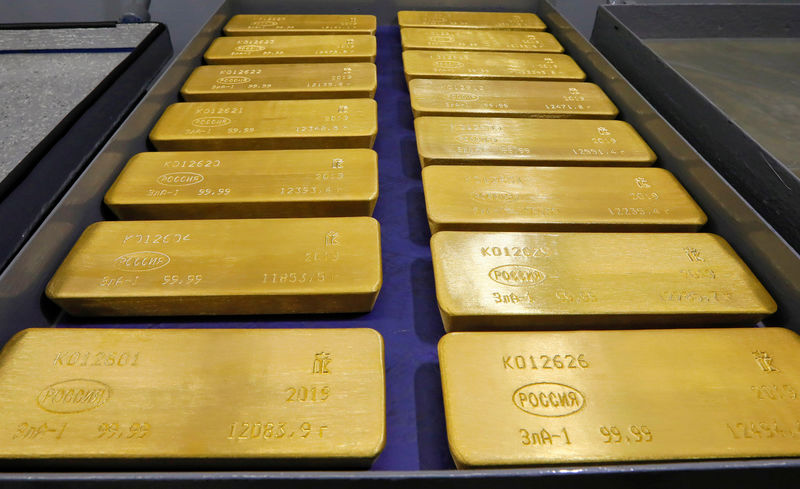Investing.com - Gold prices fell on Monday as risk appetite returned to markets in the wake of positive noises from both Washington and Beijing over their planned "phase-1" trade agreement, while the European Union finally ended the risk of a disorderly Brexit at the end of the month.
“The recent breakthrough in Brexit and, more meaningfully, the truce between the U.S. and China on trade have led to a significant reduction in tail-risk,” JPMorgan (NYSE:JPM) analysts led by Natasha Kaneva wrote in a weekly note to clients.
Given that Federal Reserve Chairman Jerome Powell has listed those as two of the biggest factors behind the uncertainty that has held the U.S. economy back this year, progress on those fronts should logically reduce the need for further interest rate cuts from the central bank.
Indeed, the bond market appears to have reduced its expectations of Fed cuts substantially in response. The two-year Treasury yield is more than 25 basis points up from its low in September, immediately after President Donald Trump’s last big escalation of the trade dispute. The two-year note yield rose three basis points to 1.65% on Monday, while the 10-year and 30-year yields rose by five basis points each.
Higher yields on other havens put downward pressure on non-interest-bearing bullion, and by 11:30 AM ET (1530 GMT), gold futures for delivery on the Comex exchange were down or 0.8% to $1,493.75 a troy ounce. Spot gold fell 0.9% to $1,491.82 an ounce.
Silver futures also retreated, losing 0.3% to $17.87 an ounce, while platinum futures fell 1.0% to $924.30.
With most people in the market still betting on a rate cut, some have warned that there could be some sharp volatility if the Fed disappoints on Wednesday.
“Let's be very clear here, we would not be at new highs in or we would not have hit these current levels of 3,000 in the S&P were it not for complete central bank capitulation,” said Northman Trader’s chief market strategist Sven Henrich. “Four rate cuts, jawboning trade optimism, all these valuations have to be justified at the end of the day. You cannot lose one of these equations and so markets remain artificially inflated.”
